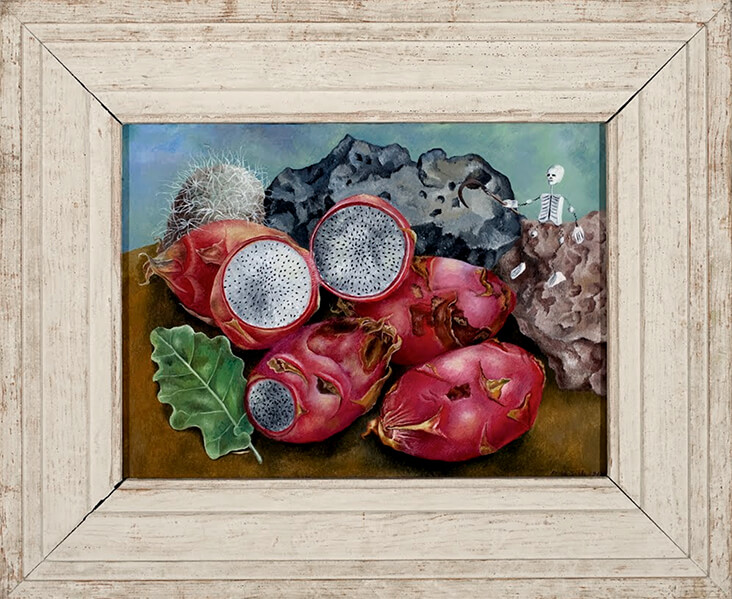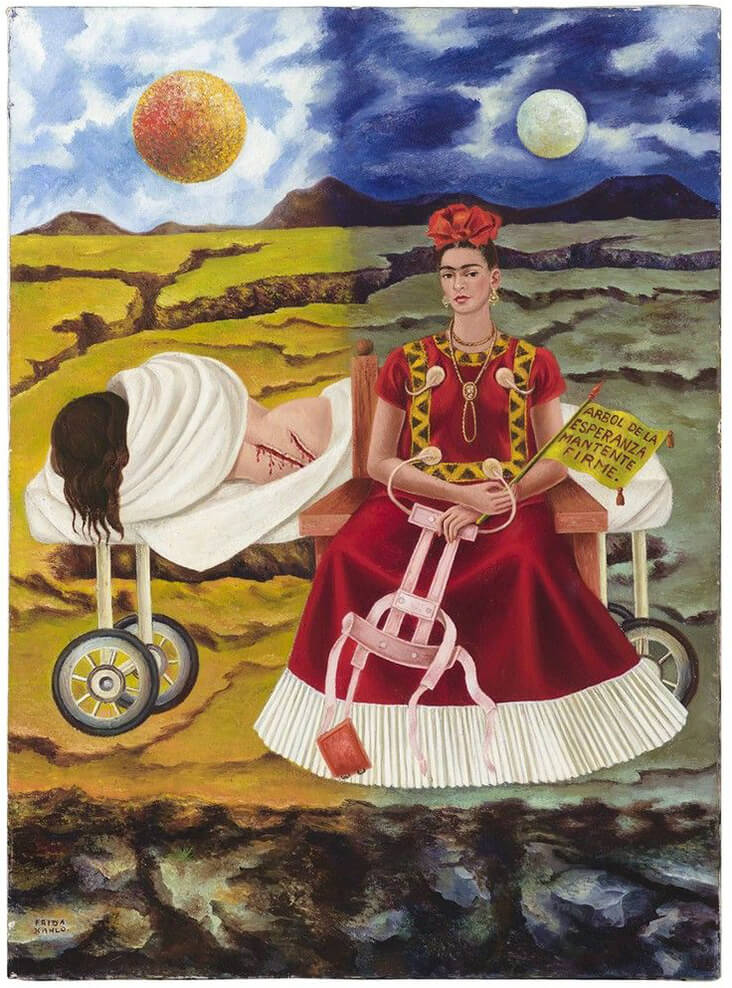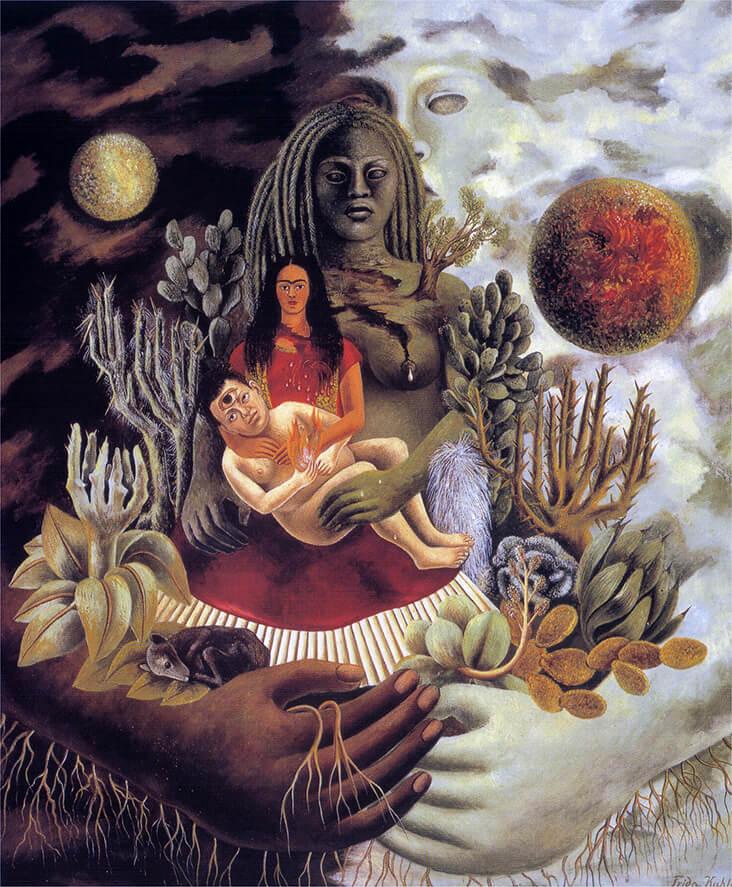FS Colour Series: Biking Red inspired by Frida Kahlo’s Mexican Heat
Colouring flowers, ribbons, veins and pulsing hearts, the iridescent crimson in Biking Red Linen is the lifeblood of Frida Kahlo’s paintings. Echoing the tinge of red in the Mexican flag, this shade came to represent many forces in Frida Kahlo’s deeply introspective paintings, but a unifying theme was a love for her native Mexico, which she bound tight into the core of her art.
Born to half-German, half-Mexican parents in 1907, Kahlo grew up as one of four sisters in the famous ‘Blue House’, or ‘Casa Azul.’ The Mexican Revolution ravaged her early childhood years with horrific violence, but collective suffering was replaced with personal agony when she contracted a severe case of polio aged just 6 years old. The illness left her bedridden for nearly a year, while her right foot and leg stayed thinner and smaller than the left for the rest of her life, which she would later choose to hide with long, brilliantly coloured Mexican skirts.
As an adolescent Kahlo initially planned to become a doctor, focussing in school on biology, zoology and anatomy, earning knowledge that would play out in her paintings as an adult. Bright, sociable and driven, she also became involved with various left-wing political groups who protested against the violence of the revolution, fighting for her beloved Mexico with a powerful patriotism. But a near-fatal bus accident tore apart early ambitions, leaving irreversible damage to her spinal cord and womb from which she would never truly recover. While convalescing in her parent’s house, boredom led Kahlo to take up drawing and she discovered the powerful catharsis of channelling inner emotions and frustrations onto paper and canvas.
In the years that followed Kahlo met and fell in love with the Mexican artist Diego Rivera – though their relationship was tumultuous, they both had a profound impact on each other’s art and life. Weaving in and out of Diego’s life, Kahlo adopted traditional Mexican clothing, wearing distinctive long skirts and huge floral headdresses in joyously vibrant colours that would transform her into a cultural icon. She wove this look into her deeply intimate self-portraits, merging style and art into one.
Throughout the later 1930s Kahlo made a series of paintings featuring monkeys, including the enigmatic Self-Portrait with Monkey, 1938. Crimson ribbons weave and swirl through Kahlo’s long, dark hair, lending her an exotic, seductive femininity, echoed in her trademark red lips. This trait is undercut with references to stereotypical masculinity, including heavy brows and facial hair, nodding towards Kahlo’s ambiguous attitudes about gender. In the later Self Portrait Dedicated to Dr Eloesser, 1940, made in tribute to her lifelong friend and physician, Kahlo becomes a Biblical martyr encircled by a thorny choker in a bleak and inhospitable landscape, but her dazzling red lips emerge from a sea of murky greens, a symbol of her bold and unflinching defiance in the face of suffering.
Tree of Hope, 1946 brings blazing hot crimson from Kahlo’s lips pouring out like liquid lava across her entire dress. Various motifs in the painting nod towards the recurring spinal surgery the artist had to undergo for much of her adult life, as well as the debilitating back brace she often wore to aid her recovery. But against a dry, barren landscape her red dress is a dazzling beacon of strength and hope, engulfing the painting with a burning, radiant optimism. In The Love Embrace of the Universe, Earth (Mexico), and Señor Xolotl, 1949, Kahlo’s brilliant red becomes a symbol of everlasting maternal love as she embraces an infantile Rivera on her lap. Though she was unable to have children, her role in Diego’s life became close to that of a mother, as she explained in her journal, “At every moment he is my child, my child born every moment.” She also places herself deeply rooted into the Mexican earth, springing forth with a burst of coloured light like a blooming tropical flower.
Viva la Vida, 1954 is the last painting Kahlo ever made – a final ode to the riotous brilliance of crimson red. The hard, waxy skin of mottled green watermelons is sliced open to reveal the juicy vibrancy inside, a fitting ode to the passionate and unstoppable spirit of Kahlo.

































Leave a comment